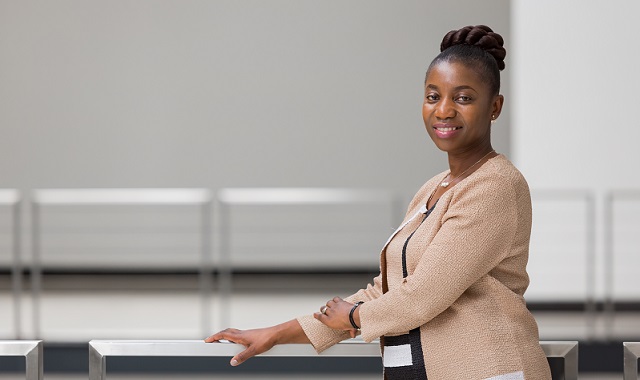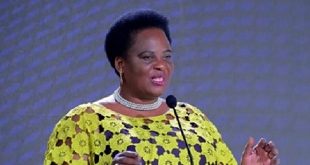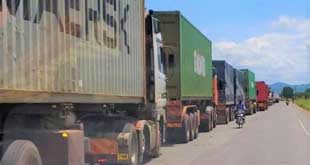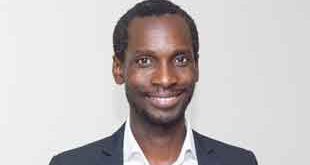
But first they must be empowered says BRAC Africa boss, Rudo Kayombo
Kampala, Uganda | THE INDEPENDENT | Lack of resources has a devastating impact on individuals, families, and communities. According to the World Bank, about 460 million people in Africa live below the extreme poverty line, which is defined as living on less than $1.90 a day. This means that one in three Africans is living in extreme poverty.
This is a major challenge facing the continent.
Poverty is a complex issue with far-reaching implications, and it has a disproportionate impact on the most vulnerable members of society, particularly young women and girls. These girls are often locked in a cycle of deprivation and hardship. They are denied access to education, healthcare, and other resources, making it difficult for them to break the cycle of poverty.
UNESCO reports that one in three girls in sub-Saharan Africa is not in school. WHO reports that girls in poverty are more likely to experience early pregnancy and childbirth, as well as violence, including sexual violence. As a result, their dreams and aspirations are stifled, and they are unable to reach their full potential.
However, despite the challenges they face, these girls are resilient. They have the potential to reshape their destiny and uplift not only themselves but also their communities. It is a pressing call to action to address the systemic inequalities that perpetuate this injustice.
In recent years, there has been a growing recognition of the need for holistic approaches to empower girls and women worldwide. This is because traditional approaches, which have focused on education and economic opportunities, have often been insufficient to address the root causes of women’s inequality because they have not considered all aspects of women’s lives. The Global South is often seen as a place of poverty and despair. However, it is also a place of great innovation and creativity. The women of the Global South are leading the way in developing new approaches to empowerment that are challenging the status quo and creating a more just and equitable world. They are showing the world that women’s empowerment is not a luxury, but a necessity.
Empowering girls and women is not just a moral imperative, it is also a smart investment. Women’s empowerment is like a pebble dropped in a pond. The ripples it creates spread far and wide, benefiting everyone in society.
When girls and women are empowered, they are more likely to stay in school, get good jobs, and have healthy families, reports UNICEF. They are also more likely to be involved in decision-making at all levels of society. There are many different ways to empower girls and women, but a comprehensive approach involves addressing all aspects of their lives, including education, economics, social status, and political participation.
This has a ripple effect on their communities, families, and countries.
Empowering women and girls
In Africa, women and girls face a number of challenges, including poverty, illiteracy, and gender-based violence. But there are organizations working to address these challenges, and one of the most successful is BRAC International.
BRAC is a global development organisation that has been working in Africa for over 50 years. Its holistic approach to empowering girls and women has been very successful. BRAC has reached millions of women and girls in the Global South, and its programs have had a significant impact on their lives. The non-profit organization works with adolescent girls and young women to improve their health, education, and economic empowerment. It also provides girls with information and education about sexual and reproductive health, as well as access to contraception and safe abortion services. BRAC also trains and develops the capacity of small-scale farmers to grow more food, earn more income, and build secure businesses, with a focus on women and youth.
BRAC’s work has helped over 15 million adolescent girls and young women in Africa. In Uganda, it offers inclusive, accessible, and convenient loan and savings products tailored to the needs of the local community, including women, smallholder farmers, small business owners, and youth.
Rudo Kayombo, Regional Director of Africa for BRAC International, speaks on the organisation’s integrated approach to bringing systemic change for positive and measurable impact for adolescent girls and young women. Kayombo said BRAC International believes that when adult women are empowered, their families, communities, and society as a whole benefit.
“(But) over the years of working with adult women, we’ve realised that some of the barriers to economic and social empowerment start when they’re younger. Hence, we’ve adopted the lifecycle approach of trying to target young girls, adolescent girls, and young women earlier, so that we already begin to remove barriers and release their potential for being people who are empowered and who can empower their communities and families.”
Initially, BRAC offered financial services to older women. However, they realised that they needed to intervene earlier when they are younger because the barriers to empowerment start manifesting very early. For example, if a girl does not have access to education, she will not be able to develop financial literacy or achieve financial security, and then be able to actualise their potential to seek to achieve life load security. By targeting young girls, adolescent girls, and young women, BRAC is helping to break the cycle of poverty and empower women to reach their full potential. This approach is having a positive impact on families and communities, and it is helping to build a more just and equitable world.
Kayombo added that the most significant barriers to female empowerment are gender norms and cultural beliefs that often lead to girls being denied an education.
“Gender norms and culture still prioritise sending young boys to school, when there are resource constraints, as opposed to young women. This is because a lot of society still believes that women have value when they get married and have children, rather than being able to deploy their economic potential and achieve livelihood security in their own right, which then contributes to lifelong security for their families and communities.”
Kayombo explained that BRAC is dedicated to empowering young women and addressing gender disparities to promote gender equality. They have developed an age-appropriate intervention model that focuses on the different needs of girls of different ages. For girls between 10 and 14, BRAC focuses on making sure that they stay in school. They provide financial support for school fees, as well as menstrual hygiene kits. This helps to keep girls in school and prevents them from dropping out at the transition stage from primary to secondary school.
“The primary reasons for dropping out are cultural norms, financial constraints faced by families, and the distance between communities and schools,” Kayombo added. “In many areas of Africa and parts of Asia, schools are located far away from where families reside. This poses safety concerns for young girls, leading them to avoid attending school altogether or dropping out at an early age. Additionally, some girls may not even start school until they are much older, further exacerbating the challenges they face. Older girls entering school may feel uncomfortable or lack confidence compared to their male peers.”
A lot of it is poverty that keeps a lot of young girls out of school.
Poverty plays a significant role in keeping young girls out of school. To address this issue, BRAC runs programs aimed at keeping girls in school and promoting early childhood education for both girls and boys. They recognise that early childhood education provides a foundation of support that helps children successfully transition from primary to secondary school, resulting in longer school attendance.
“Girls who have access to early childhood education and are supported through the transition from primary to secondary school are more likely to stay in school longer, delay marriage and childbirth, and become economically empowered,” said the Regional Director.
Challenges and what can be done
“We need to make universal access to primary education part of our laws,” Kayombo said. “It is imperative to ensure that education is universally accessible and provided free of charge, enabling more young individuals to attend school from an early age. We must support these schools to facilitate a seamless transition to secondary education.”
She added that we need to fight gender-based violence, sexual abuse, and sexual harassment that impedes the progression of young women in particular, through their education, to tertiary studies.
Measuring Impact
Their flagship program, Empowered Livelihoods for Adolescents, has been shown to delay early marriage among participants. This delay in marriage has a positive impact on their empowerment, as they are more likely to stay in school, transition to tertiary education, and secure the skills they need for the job market.
The Empowerment and Livelihood for Adolescents (ELA) program is a comprehensive program that provides adolescent girls with education, social empowerment, and economic empowerment. The program is designed to help girls develop the skills and knowledge they need to become strong, resilient, and adaptable adults. According to BRAC, ELA clubs are located near girls’ homes, providing them with a safe space to socialise with other girls and learn about life skills, livelihoods, and financial literacy. The program also offers girls access to microfinance, which can help them start their own businesses or invest in their education.
Kayombo also went to explain that the early programs targeted mostly young girls and young women. However, there is now a multi-country, multi-year program that also targets adolescent boys and young men. These programs target young men as allies to young women, as BRAC recognises that they are also disadvantaged due to a lack of employment opportunities and skills training. However, BRAC knows that the gap is higher for young women, so most of its programs still target them.
The multi-country program is currently in four countries: Tanzania, Uganda, Liberia, and Sierra Leone. It has recently kicked off in Rwanda and will expand to Ghana and Kenya in the future.
Vision for Africa
BRAC’s vision is that it would not only directly implement these programs that are aimed at accelerating the impact of empowerment programs for young women and adolescent girls and young women, but that it would also be able to share some of its proven modules with other implementers who can roll out integrated programs, says Kayombo. One of our successful models is the Ultra-Poor Graduation program, which helps individuals who are not economically active by providing them with livelihood programs and opportunities.
“The program takes people who are not economically active at all up a ladder to a point where they have some livelihoods programs.”
“Now, with that program, we implemented this program as BRAC, but we are also collaborating with governments to enable them to scale up the ultra-poor graduation program as part of their safety net programs,” she said.
“We have ongoing partnerships with the governments of South Africa, Rwanda, and Ethiopia, and we encourage more government-led initiatives in this area. By involving governments, we can achieve faster scalability, but it’s important to ensure that these programs are comprehensive rather than limited safety net measures. To achieve scale, we aim to implement programs ourselves, collaborate with partners, and work with government entities.”
Kayombo added that they only work with targeted communities where BRAC is already present. This is because its integrated program is rolled out through both our non-governmental organisation (NGO) activities and microfinance. If there is no microfinance, the economic empowerment programs may not be sufficiently rolled out. BRAC has a dual-pronged implementation program. It is scaling up as resources become available, but it also works with partner agencies to offer them technical support so that they can roll out similar programs in their areas of operation.
Advice for women working to make a difference
Kayombo said that to effectively reach adolescent girls and young women, it is essential to implement integrated programs that address their multifaceted needs. They need to have sustainable economic livelihoods, but they also need sexual and reproductive health rights, and a voice in their own communities so that they can negotiate the support they need. The best way to address these needs is to roll out holistic, integrated programs that target people’s empowerment and self-efficacy, as well as their livelihood security.
“So integrated programs are the way to go,” she said.
 The Independent Uganda: You get the Truth we Pay the Price
The Independent Uganda: You get the Truth we Pay the Price


